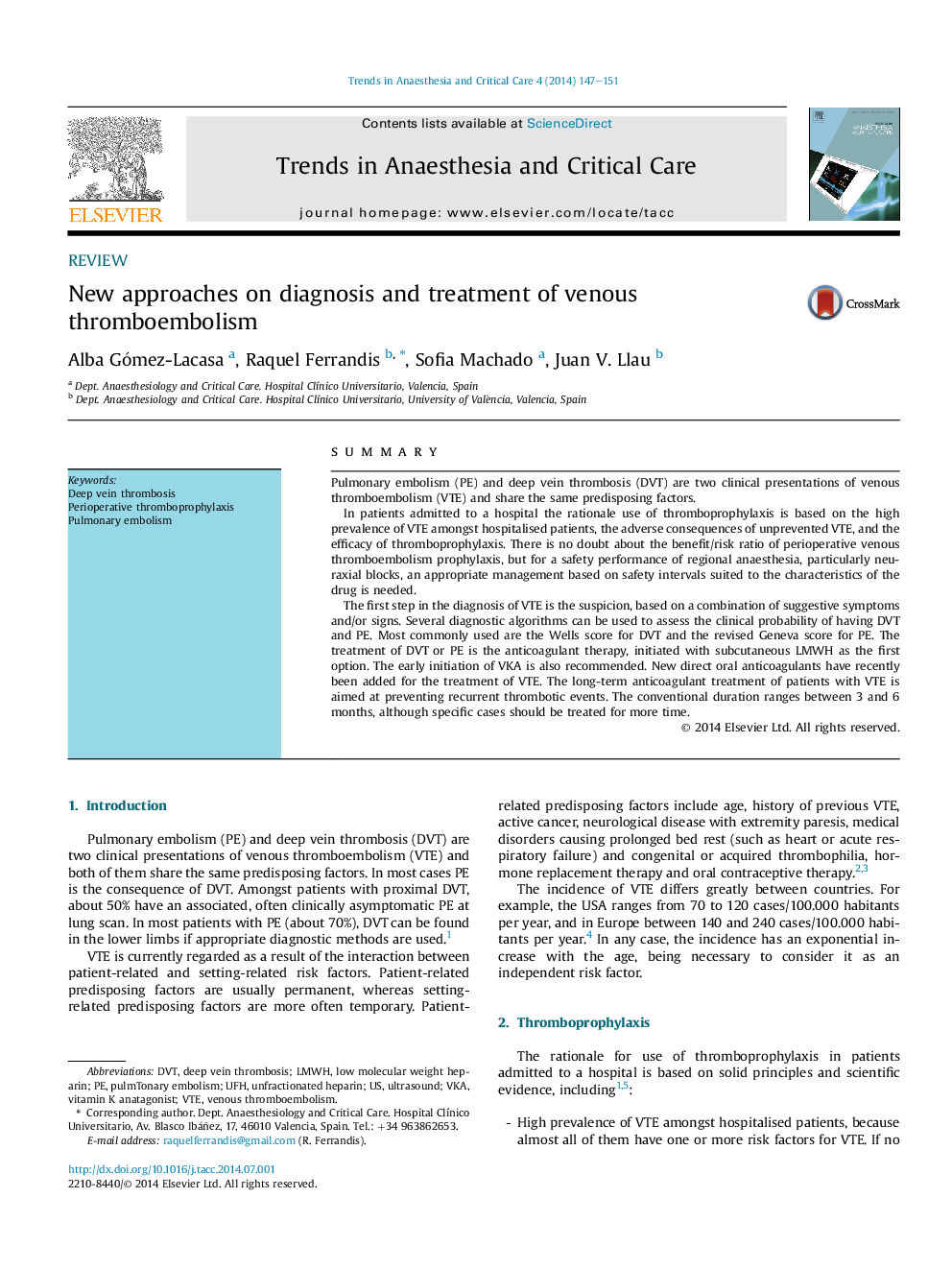| Article ID | Journal | Published Year | Pages | File Type |
|---|---|---|---|---|
| 2772591 | Trends in Anaesthesia and Critical Care | 2014 | 5 Pages |
SummaryPulmonary embolism (PE) and deep vein thrombosis (DVT) are two clinical presentations of venous thromboembolism (VTE) and share the same predisposing factors.In patients admitted to a hospital the rationale use of thromboprophylaxis is based on the high prevalence of VTE amongst hospitalised patients, the adverse consequences of unprevented VTE, and the efficacy of thromboprophylaxis. There is no doubt about the benefit/risk ratio of perioperative venous thromboembolism prophylaxis, but for a safety performance of regional anaesthesia, particularly neuraxial blocks, an appropriate management based on safety intervals suited to the characteristics of the drug is needed.The first step in the diagnosis of VTE is the suspicion, based on a combination of suggestive symptoms and/or signs. Several diagnostic algorithms can be used to assess the clinical probability of having DVT and PE. Most commonly used are the Wells score for DVT and the revised Geneva score for PE. The treatment of DVT or PE is the anticoagulant therapy, initiated with subcutaneous LMWH as the first option. The early initiation of VKA is also recommended. New direct oral anticoagulants have recently been added for the treatment of VTE. The long-term anticoagulant treatment of patients with VTE is aimed at preventing recurrent thrombotic events. The conventional duration ranges between 3 and 6 months, although specific cases should be treated for more time.
